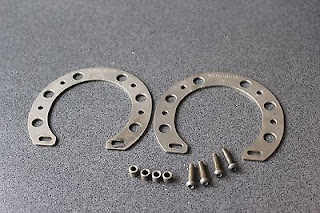Today their friends will finish the ride.
One year ago today, Deborah Bradley, Melissa Ann Fevig-Hughes, Fred Anton ("Tony") Nelson, Lorenz John ("Larry") Paulik and Suzanne Joan Sippel--members of the "Chain Gang" bicycle club--went out for late-afternoon ride. Fellow Chain Gang members Jennifer Lynn Johnson, Paul Douglas Gobble, Sheila Diane Jeske and Paul Lewis Runnels joined them.
All were experienced cyclists who'd been riding together for over a decade. They were a familiar sight to locals, who described them as well-mannered, law-abiding and friendly.
As they were pedaling near Kalamazoo, Michigan, police were looking for a blue Chevy pickup truck. During the previous few minutes, three different people called in to say that it was being driven erratically.
In spite of their efforts, police officers didn't catch up with it until it plowed into the backs of the nine cyclists I've mentioned.
While Paul Gobble is riding again, he still deals with the physical and psychological aftermath of that crash. So do Johnson, Jeske and Runnels.
Unfortunately, Bradley, Fevig-Hughes, Nelson, Paulik and Sippel cannot join them. They, riding behind Gobble, Johnson, Jeske and Runnels, bore the worst of that Chevy pickup and did not survive.
Today, the Chain Gang will hold two rides to commemorate their lost riding partners. One, called "Finish The Ride", will follow the 28-mile route they took through back roads in western Michigan. The other, twelve miles long, will take cyclists to and from the "Ghost Bike" memorial to the riders.
The chain gang is requesting a donation of $20 from each rider. Funds will go to Kalamazoo Strong. Also, a memorial mass will be held at St. Thomas More Catholic Parish before the rides and riders will meet for post-ride fellowship at Bell's Brewery.
Oh, about the driver of that Chevy pickup: Charles Pickett Jr.'s trial had been scheduled for April but has been pushed back to September. His lawyer plans to use an insanity defense. The judge is deciding whether the prosecutor can use a previous DUI as evidence. A Kalamazoo Township police officer at the scene said Pickett seemed "out of it" and "under the influence of something." Later, his girlfriend said he'd downed "handfuls" of pain pills and muscle relaxants before getting behind the wheel.
One year ago today, Deborah Bradley, Melissa Ann Fevig-Hughes, Fred Anton ("Tony") Nelson, Lorenz John ("Larry") Paulik and Suzanne Joan Sippel--members of the "Chain Gang" bicycle club--went out for late-afternoon ride. Fellow Chain Gang members Jennifer Lynn Johnson, Paul Douglas Gobble, Sheila Diane Jeske and Paul Lewis Runnels joined them.
All were experienced cyclists who'd been riding together for over a decade. They were a familiar sight to locals, who described them as well-mannered, law-abiding and friendly.
 |
| Debbie Bradley |
As they were pedaling near Kalamazoo, Michigan, police were looking for a blue Chevy pickup truck. During the previous few minutes, three different people called in to say that it was being driven erratically.
In spite of their efforts, police officers didn't catch up with it until it plowed into the backs of the nine cyclists I've mentioned.
 |
| Melissa Fevig-Hughes |
While Paul Gobble is riding again, he still deals with the physical and psychological aftermath of that crash. So do Johnson, Jeske and Runnels.
 |
| Tony Nelson |
Unfortunately, Bradley, Fevig-Hughes, Nelson, Paulik and Sippel cannot join them. They, riding behind Gobble, Johnson, Jeske and Runnels, bore the worst of that Chevy pickup and did not survive.
 |
| Larry Paulik |
Today, the Chain Gang will hold two rides to commemorate their lost riding partners. One, called "Finish The Ride", will follow the 28-mile route they took through back roads in western Michigan. The other, twelve miles long, will take cyclists to and from the "Ghost Bike" memorial to the riders.
 |
| Suzanne Sippel |
The chain gang is requesting a donation of $20 from each rider. Funds will go to Kalamazoo Strong. Also, a memorial mass will be held at St. Thomas More Catholic Parish before the rides and riders will meet for post-ride fellowship at Bell's Brewery.
Oh, about the driver of that Chevy pickup: Charles Pickett Jr.'s trial had been scheduled for April but has been pushed back to September. His lawyer plans to use an insanity defense. The judge is deciding whether the prosecutor can use a previous DUI as evidence. A Kalamazoo Township police officer at the scene said Pickett seemed "out of it" and "under the influence of something." Later, his girlfriend said he'd downed "handfuls" of pain pills and muscle relaxants before getting behind the wheel.





